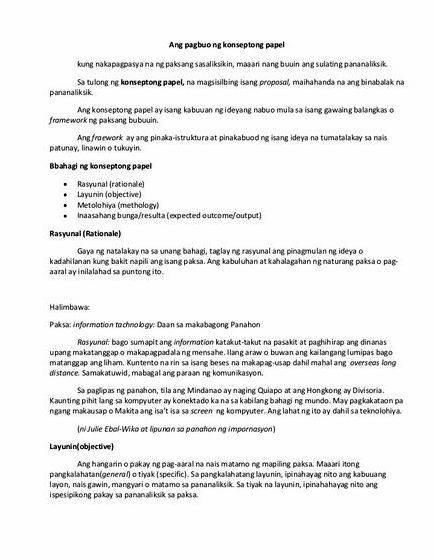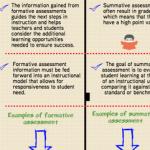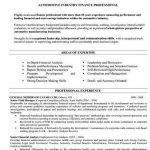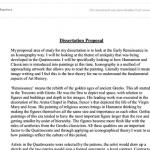Walang hanggang pasasalamat ang ipinaabot ng mananaliksik sa mga taong tumulong upang maisakatuparan ang pananaliksik na ito;
Kay Kapatid na Eli F. Soriano at Kuya Daniel S. Razon, sa mga kagandahang loob at pagbibigay ng pagkakataon na mapabilang sa mga mapapalad na iskolar ng institusyong ito,
Kay Ginoong Tykes A. Villagomez III, sa kanyang motibasyon na ibinigay sa mananaliksik upang ipagpatuloy ang pag-aaral na ito,
Kay Binibining Myra Jane B. Delos Reyes, sa pagbabahagi niya ng kanyang kaalaman at kahusayan upang matagumpay at maayos na maihayag ang nilalaman ng pananaliksik na ito,
Sa pamilya at kaibigan ng mananaliksik, sa kanilang walang sawang pagsuporta at sa pagbibigay ng inspirasyonat pagsuportang pampinansyal upang maipagpatuloy ang pag-aaral na ito,
At higit sa lahat sa Panginoong Dios, sa pagbibigay ng lakas at mabuting pangangatawan upang maisakatuparan ang pananaliksik na ito.
DAHON NG PAGPAPATIBAY
Bilang pagtupad sa isa sa mga pangangailangan ng asignaturang Filipino 2, Pagbasa at Pagsulat Tungo sa Pananaliksik, ang Pamanahong-papel na ito na pinamagatang “Isang Pananaliksik ukol sa Epektibong Pamamahayag ng Balita sa Dyaryo at Telebisyon para sa mga Estudyante ng kursong Mass Communication sa La Verdad Christian College-Caloocan” ay inihanda at iniharap mula sa Mass Communication Technology-13 ni:
Kristine Camille P. Cabrera
Tinanggap sa ngalan ng Kagawaran ng Filipino, La Verdad Christian College Caloocan, bilang isa sa mga pangangailangan sa asignaturang Filipino 2, Pagbaswa at Pagsulat Tungo sa Pananaliksik.
Ginoong Tykes A. Villagomez III
TALAAN NG NILALAMAN
Pahinang Pamagat i
Pahina ng Pagpapahalaga ii
Dahon ng Pagpapatibay iii
KABANATA I: Ang Suliranin at Kaligiran Nito 1
- Panimula 2
- Layunin ng Pag-aaral 3
- Kahalagahan ng Pag-aaral 4
- Saklaw at Limitasyon ng Pag-aaral 5
- Definisyon ng mga Terminolohiya 6
KABANATA II: Mga Kaugnay na Pag-Aaral at Literatura 7
- Mga Kaugnay na Pag-aaral at Literatura 8
KABANATA III: Metodolohiyang PAgsasaliksik 15
- Disenyong Pananaliksik 16
- Mga Respondente 17
- Instrumentong Pampananaliksik 19
- Pamamaraan ng Pagkalap ng Datos 20
- Istatistikal na Pagpili ng Datos 22
KABANATA IV: Ulat at Pagtatalakay 24
KABANATA V: Buod, Kongklusyon at Rekomendasyon 45
- Buod 45
- Kongklusyon 48
- Rekomendasyon 49
Listahan ng mga Sanggunian 50
ANG SULIRANIN AT SALIGAN NITO
Sa araw-araw, iba’t-ibang klase ng balita ang ating hinahanap at inaalam. Balita tungkol sa pulitika, isports, lagay ng panahon at marami pang iba. Karaniwang hinahanap natin ang balitang nauukol sa ating interes at pangangailangan. Napakarami na nating mapagkukunan nito, halimbawa nito ay ang dyaryo at telebisyon.
Mahalaga na alam ng bawat isa ang napapanahong balita upang maalaman nila ang mga napapanahong pangyayari sa ating kapaligiran. Halimbawa, kung ang isang tao ay alam ang nangyayari sa kanyang paligid, tulad ng di magandang lagay ng panahon, ay maaari siyang makapaghanda, nang sa gayon ay maiwasan ang higit na kasakunaan.
Mahalagang malaman ito ng mga estudyante ng kursong Mass Communication sa La Verdad Christian College-Caloocan dahil parehong nagagamit at napagkukunan ng balita ang dyaryo at telebisyon. Hangad lamang ng mananaliksik na ito na magkaroon ng interes ang mga estudyante na pag-aralan at bigyang pansin ang mga pinagkukuhanan ng balita.
Nais ng mananaliksik na ito, na maipakita ang kahalagahan ng dyaryo at telebisyon pagdating sa pagbabalita. Idagdag pa ang katotohanan na ang makabagong teknolohiya ay nagagamit na sa larangan ng pagbabalita. Ipinapakita ng pananaliksik na ito, na ang responsableng pagbabalita ay dapat na makita sa dyaryo at telebisyon.
Dito ay iisa-isahing ilahad ang kahalagahan ng balita at ang pagkakaiba ng pamamaraan ng pagbabalita sa dyaryo at telebisyon. Kung papaano nakatutulong ito sa mga estudyante at bakit mahalaga na makakuha sila ng mga tamang balita at impormasyon.
LAYUNIN NG PAG-AARAL
Pangunahing layunin ng pananaliksik na ito, ay alamin ang pagkakaiba ng dyaryo at telebisyon sa pamamahayag ng balita, kung papaanong ang balita ay nakatutulong sa pangaraw-araw nating buhay, at nang mapagtimbang ito ng mga estudyante na maaaring makatulong sa kursong kanilang pinag-aaralan.
Sinagot ng pananaliksik na ito ang mga sumusunod na katanungan:
- Ano ang pagkakaiba ng dyaryo at telebisyon?
- Sa papaanong paraan nakatutulong ang dyaryo at telebisyn sa pag-aaral ng mga estudyante?
- Ilang bahagdan ng mga estudyante ang mas gustong gamitin ang dyaryo at ilang bahagdan naman ang nagsasabing mas gusto nilang gamitin ang telebisyon bilang mapagkukunan ng balita?
KAHALAGAHAN NG PAG-AARAL
Sa ating pangaraw-araw na pamumuhay, naghahanap tayo ng napapanahong balita at pangyayari sa ating kapaligiran. Bilang isang Pilipino at mamamayan ng nating bansa, ay gusto nating nalalaman kung ano na ang kalagayan ng ating bansa at buong mundo. Mahalagang malaman natin ang balita dahil sa panahon ngayon, maraming pagbabago at nmahahalagang pangyayaring nagaganap. Dapat na alam natin ang mga napapanahong pangyayari upang hindi tayo mapag-iwanan ng panahon.Karaniwan nating nakukuha ang mga impormasyon at balitang ito sa dyaryo at telebisyon, na ginagamit ng midya upang ipalaganap ang balitang nakalap ng mga mamamahayag. Kaya nagkaroon ang mananaliksik na ito, ng interes na alamin ang higit na epektibo sa dyaryo at telebisyon, pagdating sa pamamahayag ng balita.
Nagagamit ng mga estudyante ang dyaryo at telebisyon, sa kursong kanilang pinag-aaralan ang mga impormasyong nakukuha nila sa balita. Ang isang estudyante na nag-aaral ng kursong Mass Communication ay dapat na hindi nahuhulisa pag-alam ng mga napapanahong balita. Kaya mahalagang pag-aralan ang mga pinagkukunan nito, dapat na makatiyak na mga tamang impormasyon ang kanilang nakukuha.
Higit na makatutulong ang pananaliksik na ito, at ang ginawang paghahambing sa dyaryo at telebisyon, na malaman kung saan mas nagtitiwalang kumuha ng balita ang mga mag-aaral.
SAKLAW AT LIMITASYON
Sinasaklaw ng pananaliksik na ito, ang pagsusuri kung alin ang mas epektibong magpahayag ng balita sa dyaryo at telebisyon, mga palagay ng mga estudyante ukol sa kanilang pagkakaiba, at sa kung papaanong paraan nakatutulong at nagagamit nila ang dyaryo at telebisyon sa kursong kanilang pinag-aaralan.
Isinasaalang-alang lamang dito ang opinyon ng mga estudyante ng kursong Mass Communication sa loob ng paaralang La Verdad Christian College Caloocan. Hanggang dito lamang ang saklaw ng pananaliksik na ito at hindi na masyadong palalawakin pa.
Ang paghahambing sa dyayo at telebisyon bilang instrumento ng midya sa pagpapahayag ng balita, ay isa sa mga tatalakayin sa pananaliksik na ito.
DEFINISYON NG MGA TERMINOLOHIYA
Para makatulong na mabigyang linaw ang mga salitang ginamit sa pananaliksik naito ay binigyang kahulugan ang mga sumusunod na katawagan.
Balita. Ito ay isang uri ng panitikan na nagbibigay impormasyon ukol sa mga napapanahong pangyayari sa loob at labas ng ating bansa.
Dyaryo. Ito ay isang uri ng babasahin na naglalaman ng mga napapanahong balita.
Telebisyon. Isang sistemang telekomunikasyon para sa paggawa at pagsasahimpapawid ng mga programa, tulad ng programang nauukol sa balita
MGA KAUGNAY NA PAG-AARAL AT LITERATURA
Kaugnay na Pag-aaral
The Great War: The Similarities and Differences of Print and Television Media
News is more likely to be reported if meets one of the following characterisitics: It concerns elite personalities; It is negative; It is recent; Or it is surprising (Fiske 96). The story of the Bush Administration’s “regrouping” attempt after a “bad week” is all of these things. The President, after a volley of defeats and scandals in the past week including Harriet Miers’s dismissal, Scooter Libby’s indictment, and the death toll in Iraq passing the 2,000 mark, needs to “regroup” and “excite America,” according, respectively, to the Boston Globe and CNN. The newspaper and cable news outlet naturally have differing target audiences, and even though they are reporting on basically the same story, the presentation, coverage, and range and specificity of sources differ as well. However, they don’t differ entirely — messages still exist within the media, language placed in formation and given meaning through interpretation.
The Boston Globe. the Boston affiliate of the New York Times. places the beginning of the article headlined “Bush regroups, focuses on war” on the front page of the paper. A matter of national importance such as the presidential agenda would normally be headed for the front page anyway, but the article is placed in the layout with a large jump seven pages later. There is a method to this practice: while trying to grab the reader’s attention on the first page of the newspaper with the current and relevant words “Bush” and “war,” the cognitive style of a newspaper also assumes that the interested reader will turn seven pages to read what is actually, contrary to first glance, a lengthy article.
CNN, owned by media mogul Ted Turner, rose to fame and integrity with its aggressive coverage of the Gulf war in 1991. As the first 24-hour cable news outlet, CNN is a primary source of news for many Americans. The story on Bush’s bad week begins with Sen. Harry Reid, (D) Minority Leader, blasting the President and charging him to “get in touch with reality.” This is CNN’s version of a headline, but with a television twist. Unlike the Globe ’s use of the words “Bush” and “war,” red-flag words in today’s news and political discussion that entice readers, CNN begins its coverage with a controversial statement by someone with an agenda himself.
This instantly sparks a judgment in the viewer’s mind agree or disagree, the lead tries to lure a wide range of viewers from across the political spectrum into wanting to know more.
The nature of a newspaper, as one of McLuhan’s “hot media,” is to condense a copious amount of information in a relatively small amount of space — it uses a highly entropic, highly elaborated code. “The elaborated code,” says Fiske, “is geared towards the individual as a
person, rather than a status role within a group” (71). Newspapers, while a mass medium, can only appeal to one consumer at a time. Thus, the style of a newspaper is personal, elaborated, and full of information. According to McWhorter, this style is only seen in written language He uses the example of J.K. Rowling’s Harry Potter series to illustrate this point: “To us, Rowling’s [elaborated] phraseology seems ordinary, but it is actually only so in a written language. Indeed, it is only possible in a written language” (McWhorter 9).
The oral language of CNN’s soundclips and analysts, on the other hand, appeal to a broad range of people. It is “oriented towards social relations,” and the restricted code speech involved “is indexical of the speaker’s status within the group” (Fiske 71). This means that the speech used by each of the participants in the CNN broadcast represent their titles or status within that group of people. The television station uses metonyms to make this point: Sen. Reid’s statement is portrayed as representative of the entire Democratic Party, while Sen. Cornyn’s statement is shown as representative of the Republican Party. CNN’s time to use on this story is restricted, and so is the code they use. The informality of oral language, even on television, assumes that the viewer is aware of relevant events – this is made clear by Bill Schneider when he refers to what Vice President Dick Cheney’s Chief of Staff, Scooter Libby, “was doing in this matter.” He does not elaborate on what matter he is talking about – television, like oral language, is continuously flowing.
Plainly, there is a fundamental difference between written and oral communication – the styles they employ, and the messages they deliver. The Globe story places a primary emphasis on Bush’s turn to focus on the war in Iraq, but upon closer examination there seems to be a message hidden inside the headline. The authors state, with the support of “political specialists,” that “[b]y acting quickly on a Supreme Court pick… Bush can change the political discussion in the country.” This sentiment is echoed later by Rep. Christopher R. Shays, (R) Connecticut, paraphrased by the authors themselves: “Bush must act quickly to trumpet both the successes and failures of the war, and to remind the American people of the need to fight terrorism aggressively,” Shays says. The unadulterated, objective message of the article is stated in the headline, but the true message is in the text.
On television, it is perhaps harder to slide a hidden meaning into a news piece – instead, because of the immediacy of oral language, the message is plain for all to see. CNN’s coverage depicts the President’s “bad week” and the Scooter Libby scandal in the spotlight. After introducing the topic of the piece with the two opposing senators, the CNN anchor, Carol Lin, launches into Presidential job approval rating polls, which are unchanged after this “admittedly very bad week.” But what has changed, as political analyst Schneider tells viewers, is
American’s approval of President Bush’s management of the government. These numbers are accompanied by visuals, which look suspiciously like PowerPoint slides; Tufte would probably call them “content-free,” especially since the text on the visuals had just been stated by Lin and Schneider. Schneider’s repetition of the word “failure” and his recommendation that the inner circle of the
White House “fess up” might be clues that betray his, and thus CNN’s, impartiality. He is, after all, CNN’s senior political analyst. Despite the journalistic differences between the two media, there are a number of parallels in the content of the two stories. Boston University historian Michael Corgan’s claim that Bush “has to recover some sense of competence in the administration” mirrors CNN’s polls of the President’s government management skills. Both sources cite the possibility of a new Supreme Court pick, though they disagree on the effect it will hav on the American people. Perhaps most interestingly, both sources compare Bush’s situation to former President Clinton’s policies. As stated by McLuhan, “the medium is the message,” and it could be that the message, at its raw, informational core, only becomes a message when transmitted through one medium or another. “The content of writing is print or speech,” he claims, “but the reader is almost entirely unaware either of print or of speech” (McLuhan 33). Television and newspaper may be different, but they are still media; written and oral language may be different, but they are still language. This paradox of similarity and difference shows up in any analysis of media – while “the medium is the message,” the message, in its most active, salient form, is the medium.
The differences in newspaper and television reporting may seem obvious, but the complexities surrounding the two media must be considered. One uses elaborated codes, the other restricted; one uses written language, the other oral. But despite these fundamental semiotic disparities, both media report the same stories, and both carry within them a message within a message – if the reader or viewer is sharp enough to find them.
Mga kaugnay na Literatura
Differences between newspapers and tv news, and the reasons why they are different?
Best Answer Chosen by Voters
TV news is often written by someone other than the person reading it. When a news anchor goes to a reporter in the field, that reporter is as close to a print news reporter as the two media can get.
TV news relies on visual images and very short sound bites and stories are rarely very long or in depth. Newspapers have the &”luxury&” of space, so that articles can go deeper and give much more information.
If you miss something on TV (unless you’re recording it), it is gone.
A newspaper can be picked up and read at your leisure.
TV is more &”instant&”. If there’s a breaking story, your TV program may be interrupted with a news flash. To read all about it, you’ll have to wait for the next edition of the newspaper.
10
Why are they different? Because one is in print and the other is in your face.
Unfortunately, newspapers are folding as more and more people turn to television and/ or the internet for their information.





 Storm warnings adrienne rich thesis proposal
Storm warnings adrienne rich thesis proposal Master thesis proposal finance auto
Master thesis proposal finance auto Dissertation proposal sample economics thesis
Dissertation proposal sample economics thesis Peircean induction and the error-correction thesis proposal
Peircean induction and the error-correction thesis proposal Dissertation proposal presentation ppt slides
Dissertation proposal presentation ppt slides






